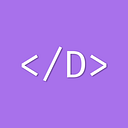ReactJS is a popular JavaScript library used in web development that allows developers to create user interfaces and manage data more easily. ReactJS is a powerful tool, but it can be tricky to learn and use. To help developers get up and running with ReactJS, we’ve put together this ReactJS cheat sheet.
In this cheat sheet, you’ll find essential ReactJS concepts, examples of how to use them, and helpful tips and tricks.
Basic Syntax
The most basic syntax of ReactJS is simple and straightforward. It consists of three main components:
• Components: These are the main building blocks of React apps. Components are JavaScript functions that return HTML elements.
• Props: Props are the data passed down from parent components to child components.
• State: This is an object that stores data that can be used across the entire application.
Rendering Elements
Rendering elements is an important part of ReactJS. To render elements in ReactJS, you use the ReactDOM.render() method. This method takes two arguments: the element to be rendered and the DOM element to be rendered in.
For example:
ReactDOM.render(<h1>Hello World!</h1>, document.getElementById(‘root’));
This code will render the <h1>Hello World!</h1> element in the DOM element with the ID ‘root’.
State and Lifecycle
In ReactJS, components can have states that are used to store data and control the behavior of the component. The state of a component is an object that can be accessed and modified with the this.setState() method.
The lifecycle of a component refers to the various stages it goes through, from creation to destruction. React components have several lifecycle methods that can be used to execute code at different stages of a component’s lifecycle.
Data Flow and Props
Data flow and props are two of the most important concepts in ReactJS. Data flow refers to the way data is passed from parent components to child components.
Props are the data that is passed from parent components to child components. Props are immutable, meaning they cannot be changed by the child component.
Handling Events
In ReactJS, events are handled using event handlers. Event handlers are JavaScript functions that are triggered when a user interacts with a component. For example, when a user clicks a button, the onClick event handler is triggered.
The syntax for creating an event handler is as follows:
handleClick = () => { // code to execute when the event is triggered }
Conclusion
ReactJS is a powerful JavaScript library used in web development. This cheat sheet provides developers with essential concepts, examples, and tips to help them get started with ReactJS.
👉 Follow us on Twitter!
Happy Hacking!
